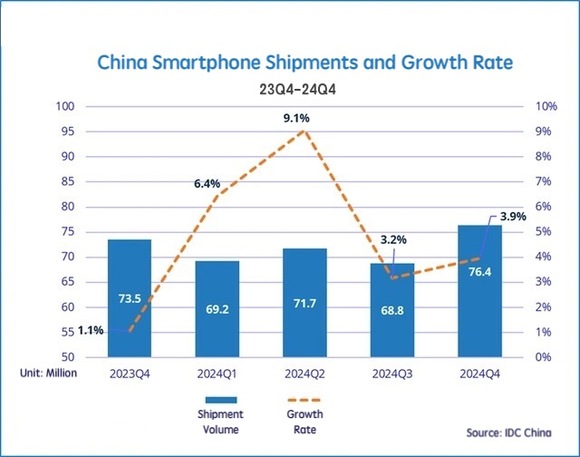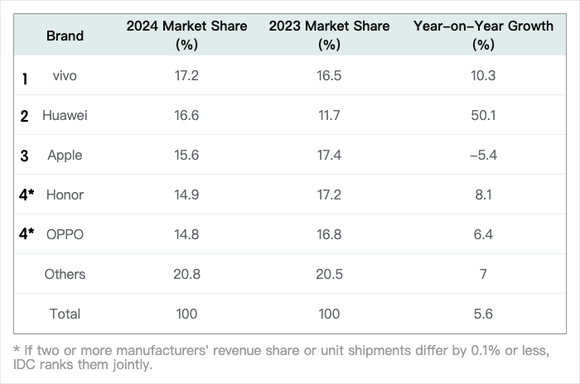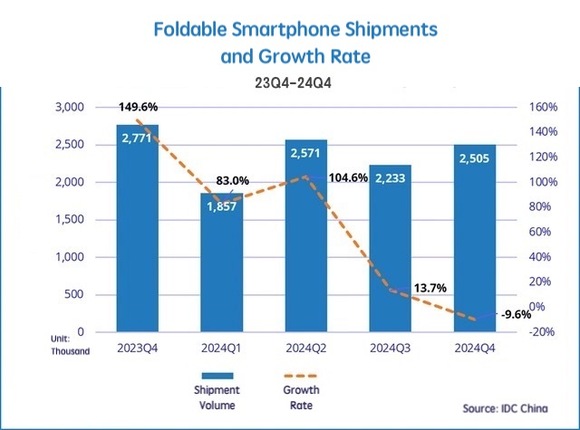Key drivers of this recovery included AI innovations, improved screen technology, and longer battery life, all of which have spurred consumer interest in upgrading to new devices.

Li Kefeng
China’s smartphone market showed strong signs of recovery in 2024, according to IDC's latest report released on January 20. Fueled by pent-up upgrade demand and government stimulus policies, the market saw a 5.6% year-on-year increase, with shipments reaching approximately 286 million units.

In terms of overall market share, the top five smartphone brands in China for 2024 were vivo, Huawei, Apple, Honor, and OPPO. In the fourth quarter, Apple topped the list, followed by vivo, Huawei, Xiaomi, and Honor.

In the foldable phone sector, Huawei maintained a commanding lead with nearly 50% of the market share. Honor ranked second with 20.6%, while vivo's X Fold3 series secured third place at 11.1%. Xiaomi, with its vertical foldables, held 7.4%, and OPPO, despite not releasing new products in the past year, still managed to capture 5.3% of the market.
However, the foldable smartphone segment saw a slight dip in the fourth quarter. After nine consecutive quarters of rapid growth, shipments of foldable phones dropped by 9.6% year-on-year to 2.5 million units. Despite this, the overall foldable market remained strong, with total shipments for 2024 reaching around 9.17 million units, a 30.8% increase from the previous year.

IDC predicts that the market will continue its growth in 2025, supported by consumer subsidies. However, the foldable phone segment is expected to experience a slowdown, with many brands taking a more cautious approach.
IDC's China Research Manager, Guo Tianxiang, cautioned that while the recovery is encouraging, manufacturers must be mindful of potential risks. While subsidy-driven demand may continue, excessive reliance on government incentives could lead to oversupply and a drop in demand later on. Manufacturers will need to adjust their strategies and product offerings accordingly to sustain growth in the long term.